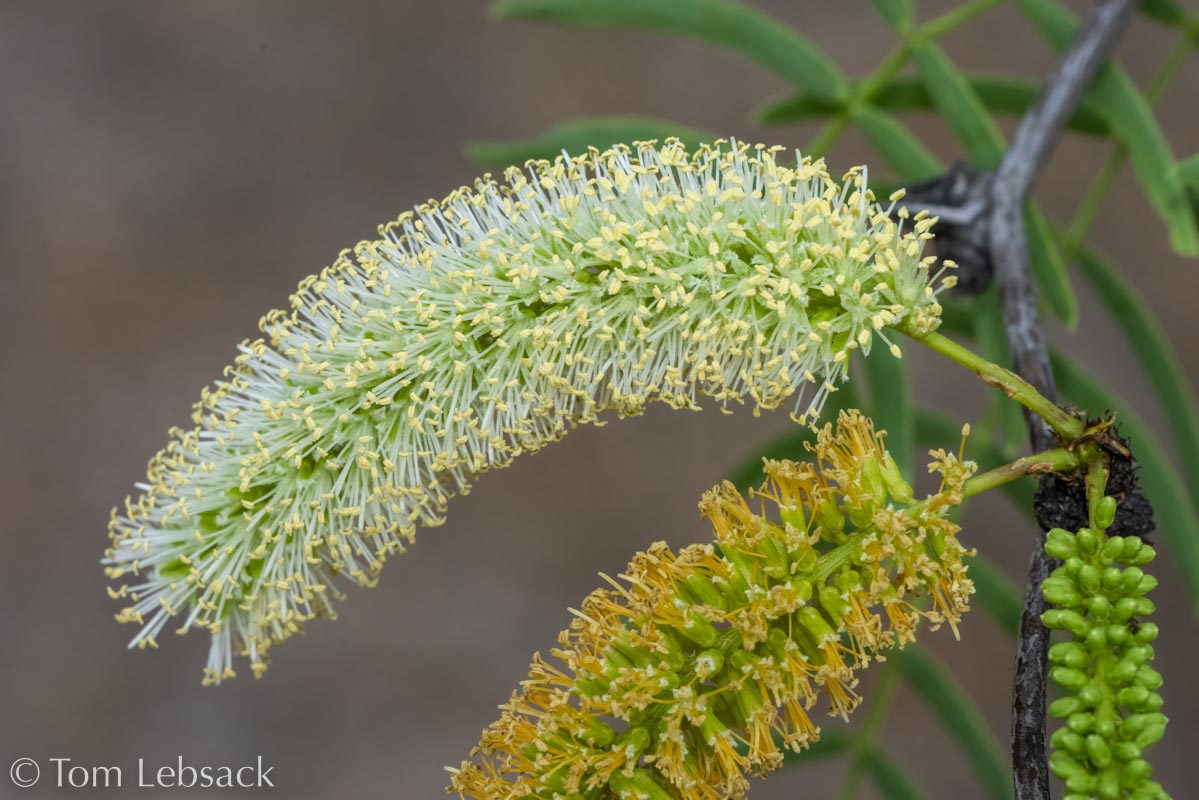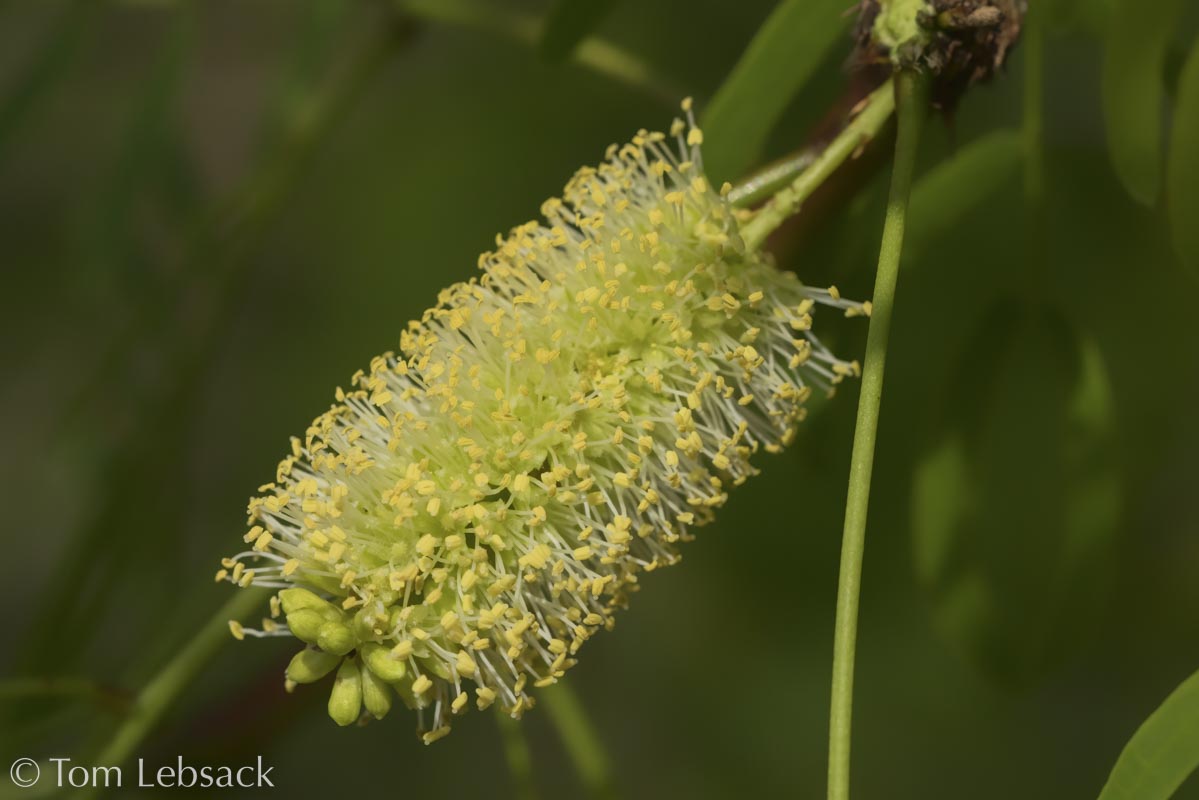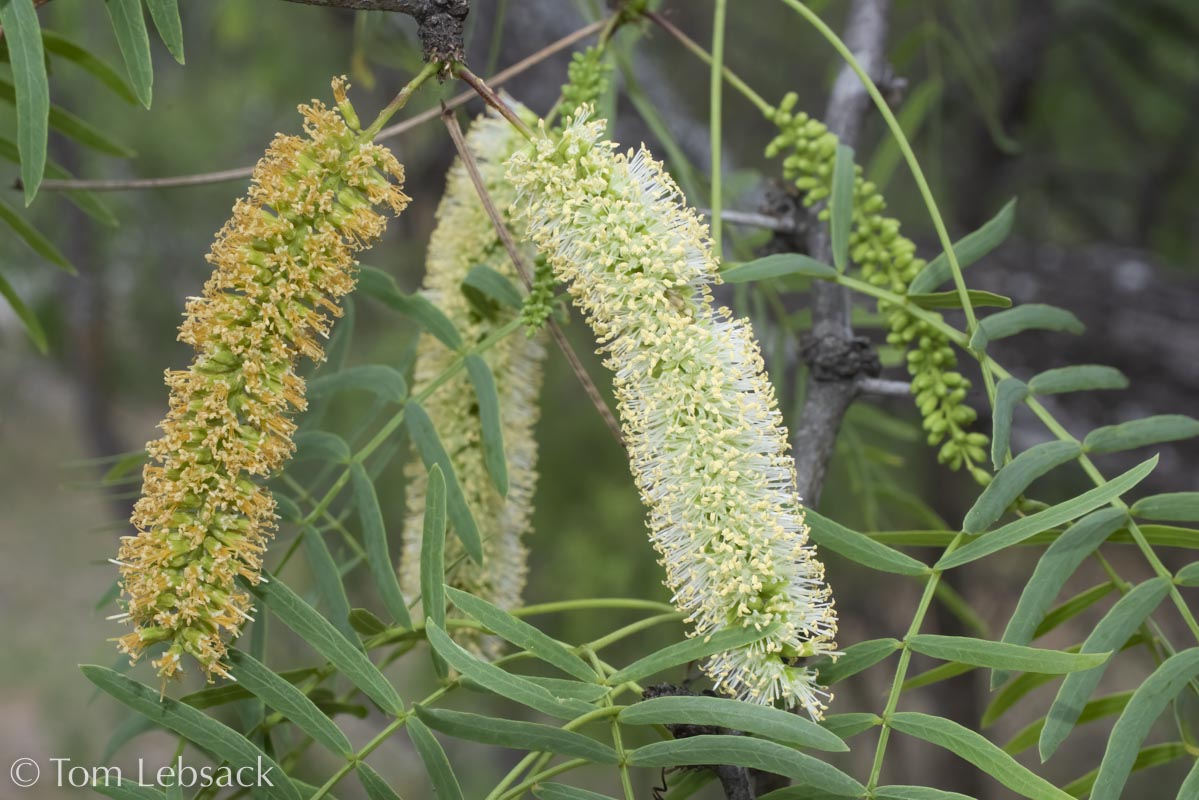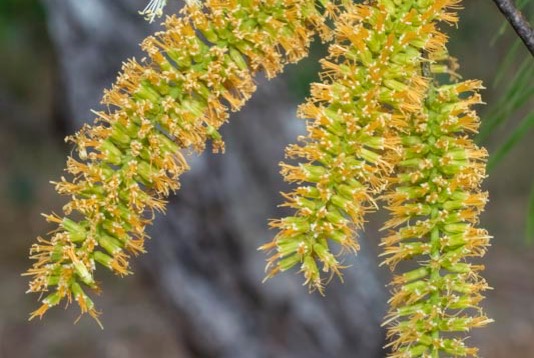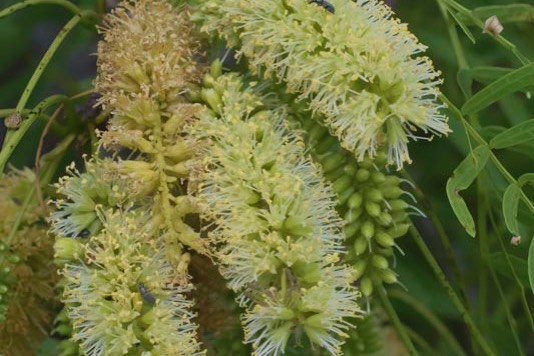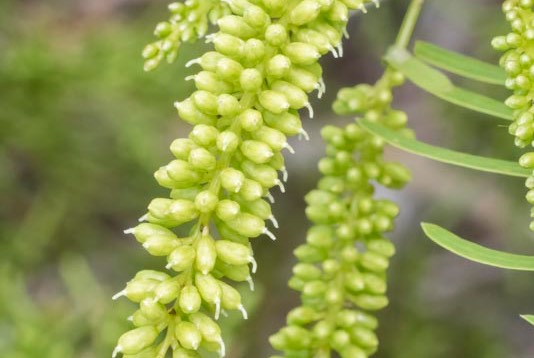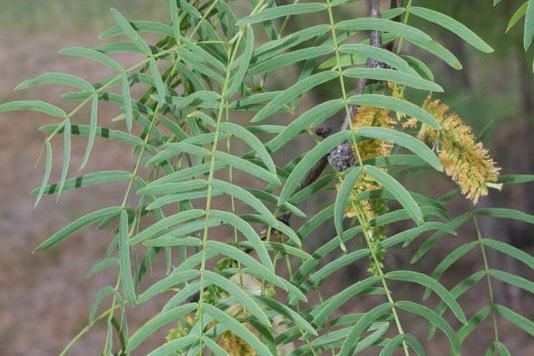Texas Wildbuds
Prosopis glandulosa var. glandulosa
(Honey Mesquite)
| Scientific Name | Prosopis glandulosa var. glandulosa | USDA PLANTS Symbol | PRGLG |
| Common Name | Honey Mesquite | ITIS Taxonomic Serial No. | 529861 |
| Family | Fabaceae (Pea) | SEINet Reference |
Click Here |
| Description | Habitat: Found in a variety of soils and environments from river bottoms to rangelands and desert; widespread throughout Mexico, Texas and adjoining states. Plant: Deciduous large shrub or small tree to 30 feet tall; straight, sharp spines 1 to 2 inches in length on branches; gray-brown bark, newer twigs red-brown or greenish. Leaves: Bipinnately compound leaves; first division with 2 to 4 sets of pinnae, each composed of 8 to 20 pairs of green, smooth leaflets; linear-oblong leaflets, 1/2 to 1-1/2 inches long. Inflorescence: Cylindrical spikes, 1/1-2 to 3 inches long, composed of many small, tubular flowers with 5 green petals, and numerous protruding white to yellow stamens. Bloom Period: March to November. Fruit: Seed pods 4 to 8 inches long, straight or slightly curved; tan colored when mature. Reference: SEINet, Wildflower Center and others. |
BONAP Distribution Map Map Color Key Map Color Key |
Texas Status: Native |
Banner photo of Castilleja indivisa and Lupinus ssp. taken along FM 1323 north of Johnson City, Blanco County
© Tom Lebsack 2025
Every attempt is made to provide accurate, up-to-date, and relevant information, but the completeness or accuracy of any information presented on this website cannot be guaranteed. I use authoritative references to insure high standards of accuracy and review and update the information frequently.
